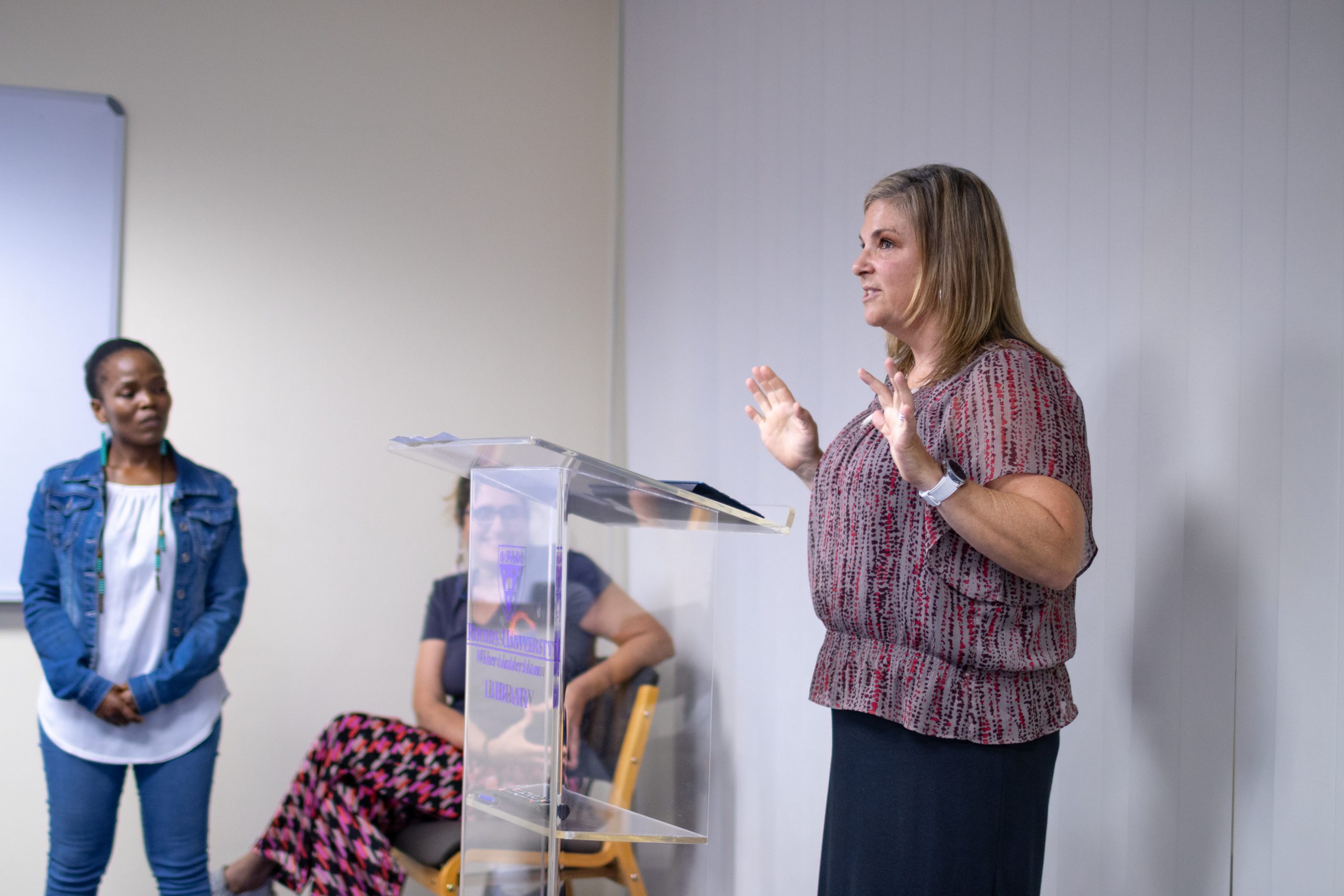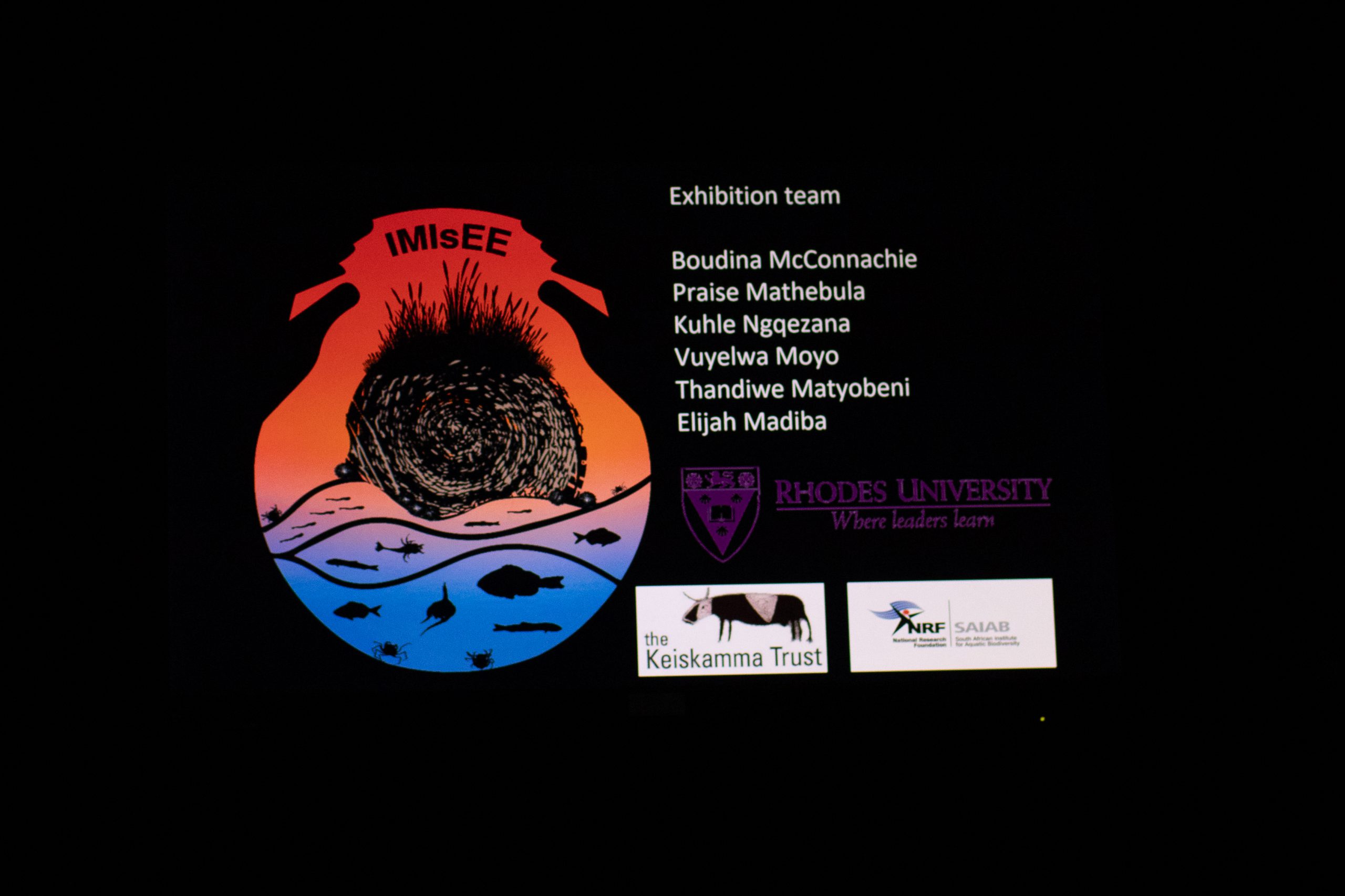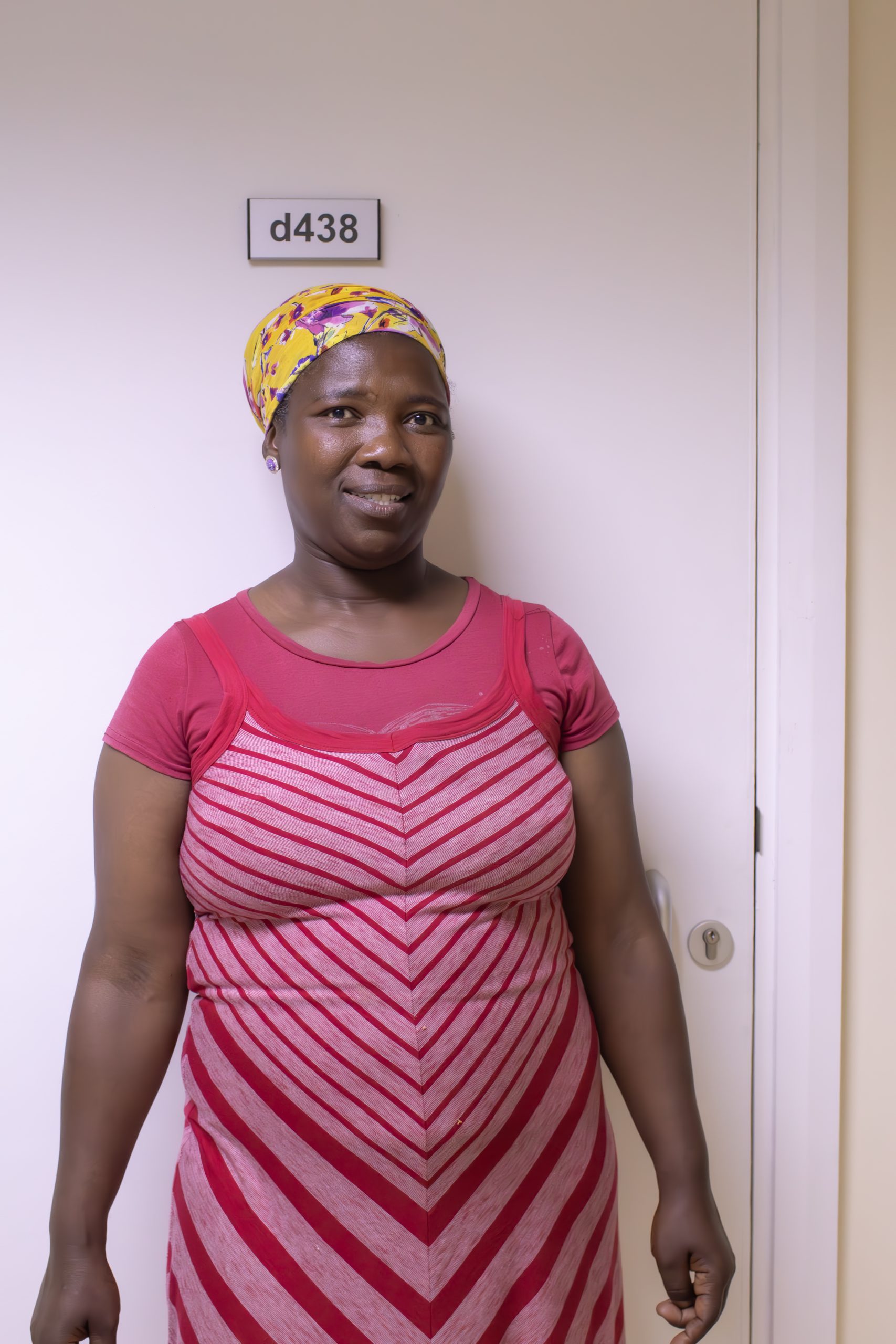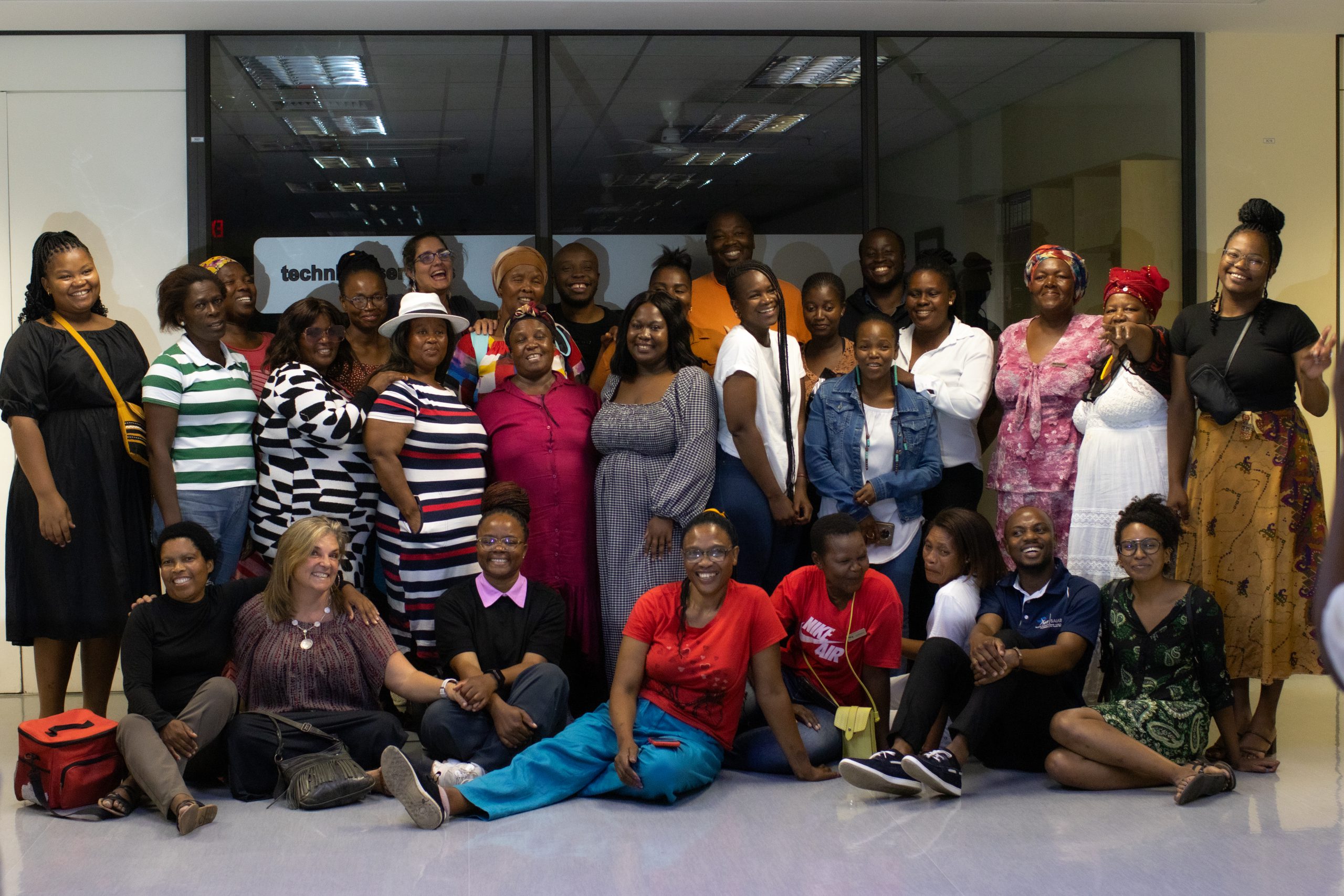By Nothando Yolanda Tshuma
On 14 February 2024, the National Research Fund – South African Institute for Aquatic Biodiversity (NRF-SAIAB) officially launched the Harmony of Science and Art – Sound and Postcard Exhibition at the Rhodes University Main Library. The project is a collaboration between NRF-SAIAB’s IMIsEE Project and the Rhodes University Department of Music and Musicology, combining science, art and music to preserve Marine Coastal systems.
Speaking about the project were Rhodes University Music lecturer Dr Boudina McConnachie and Prof Francesca Porri, a Scientist at SAIAB.

According to Porri, “The project goes back to trying to find solutions to bring back sea life, the marine life, into the coastal environment that is being affected by humans.”
Porri highlights that the coastal environment is under various threats that could degrade and destroy it due to humans using the sea as a mode of transport. Therefore, the project is used to fight against that.
“It has been an incredibly long and wonderful Journey, completely experimental with lots of mistakes along the way,” said McConnachie.

Porri adds that the project was missing a human element, and that’s when the scientists collaborated with McConnachie at the Rhodes Music Department and the group of women from Hamburg, who played an integral part in weaving the mats to help preserve the coastal life.
Through staying in Mthatha, Porri says they found the idea of weaving fascinating and thought it could be useful in the harbours when they are made into structures. “These structures have been put onto several sites,” says Porrie, and PhD students involved in the project are still working on this research.

Veronika Betani, from Hamburg, plays multiple roles in the project, such as seamstress and lead embroiderer; she played a huge part in the weaving process for the project. She iterates that the material that was used to make these structures is called Imizi, which is the grass that is collected and weaved together to make mats. Betani explains that imizi is generally used for traditional purposes, such as when one becomes a sangoma, a newly wedded bride would also sit on the mat.
Betani says that although they grew up with imizi, “[the scientists]wanted us to weave imizi so that they can put it along the base of the sea, where the species will go in order to preserve [the ecosystem].”

“As Scientists, we immediately realised that this strong social experiment needed something,” says Porri, and that is how the incorporation of music came up. Porri adds that incorporating music in this research also played a significant role in getting funding for this project.
To incorporate music into the project, McConnachie says that at the International Library of Music (ILAM), they had done a sound podcast before and thought they should combine it with the research they were already doing. In the beginning, people were confused, asking, “Why include music with the research that was already in progress,” says Mc Connachie.
She adds that when they went to the Hamburg community, they realised the music was charged by the amaXhosa tradition. “As we spent more time there, the penny started to drop. We found that it wasn’t just music but stories, and the conversation was the gold. That was the data,” said McConnachie. She also describes the process as personal and moving through the deep stories some community members have told her.
Speaking to Grocott’s Mail, Betani says seeing her art on display is inspiring. “I didn’t know that it’s something that will end up like that because now it’s an archive where they preserve what we are doing.” She adds that future generations can observe their grandparents’ art.
“It’s a legacy that we can remember as Keiskamma.”

This project is life-changing for those involved because of the employment opportunities it has brought to the community of Hamburg. One of the workers, Nokuzola Mbaphantsi from Hamburg, whose role in the project is “ukwenza Imizi”, says, “This project has helped me gain income, and now I can pay for my children’s education.”
Speaking to Grocott’s Mail, Dr Nokubonga Mbandzi-Phorego, who joined the project in 2022, says that although the project is incomplete, she intends to restore and check pollution in urban areas. “We are progressing in the right direction, and we continuously engage with the community members just to get their feedback as to whether we are moving in the right direction,” she said.



